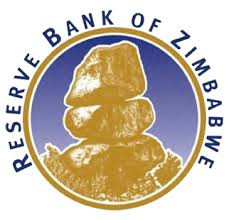
THE International Monetary Fund (IMF) has projected that Zimbabwe’s annual inflation rate will reach nearly 400% by year end on depreciation of the local currency.
This comes despite the Zimbabwe National Statistics Agency changing how it determines inflation rates for the second time this year.
In its World Economic Outlook report released during the ongoing IMF/World Bank annual meetings, IMF predicted that annual inflation would hit 396,2% and 190,2% by year-end and in 2024 respectively.
Zimbabwe’s annual inflation was 18,4% in September, after authorities adopted a geometric aggregation method to analyse the consumer price index.
The IMF inflation projections give Zimbabwe the highest annual inflation rates in Africa.
The October inflation projections is an upwards review of 224 and 55,6 percentage points, respectively, by the fund from its April projections for 2023 and 2024.
IMF’s inflation projections come despite the fund reviewing the country’s gross domestic product (GDP) growth upwards by 1,6 percentage points to 4,1% this year.
It is also projected an upwards review of one percentage point to 3,6% GDP growth for 2024.
- Mavhunga puts DeMbare into Chibuku quarterfinals
- Bulls to charge into Zimbabwe gold stocks
- Ndiraya concerned as goals dry up
- Letters: How solar power is transforming African farms
Keep Reading
The lower growth for 2024 is due to the El Nino drought which is expected to negatively weigh down the agricultural sector’s cash crops and weaken international minerals prices.
However, looking at the GDP growth, this has been shrinking since 2021 where the fund projected a growth rate of 8,4% and 6,2% in the following year.
“Real GDP growth is projected to slow in 2023, constrained by global headwinds, structural bottlenecks, and price and exchange rate instability. Growth in 2023 will be driven mostly by agriculture and services, particularly tourism,” the World Bank said, in its recent economic update.
“Manufacturing and mining sector growth are projected to slow in 2023, partly affected by electricity shortage, inflation, and exchange rate pressures. The fiscal balance is projected to turn into a deficit in 2023 on a high wage bill, high interest payments from QFOs and the resumption of spending after elections.”
The bank said that Zimbabwe’s economic development continues to be hampered by several challenges.
“Real GDP growth remained high at 6.5% in 2022 from 8.5% in 2021 driven by a continued growth in agricultural production. Mineral exporters benefited from rising high global prices and together with tourism contributed to overall economic growth. However, triple-digit inflation constrained private sector demand,” the World Bank said.
While the Zimbabwe dollar gained 20% against the greenback, after the volatile period of May and June, the currency has since lost 20% following the disputed elections in August.
This led to additional spending, mostly on public investment, procurement of grain, and social protection, was driven by inflation and was matched by higher revenue, according to bank.
Treasury has since moved external borrowing from the central bank to its department to deal with quasi fiscal activities.
“Although extreme poverty has declined since its peak in 2020, it remains high in the context of cyclical agricultural production and elevated food prices,” the World Bank said.
“Persistent inflation, high dependence on low-productivity agriculture, slow structural transformation, and intermittent shocks like drought, natural disasters, and the COVID-19 pandemic have contributed to the high rate of poverty and vulnerability in Zimbabwe.”
The bank added that high, unsustainable debt and arrears to international financial institutions continue limiting fiscal space and growth potential.











